Garfagnana, what to see: the 10 places not to be missed
Garfagnana, a beautiful mountainous region in the northern part of Tuscany, corresponding to theupper Serchio valley, is located a short distance from Lucca, the provincial capital, and is characterized by beautiful natural landscapes, lush chestnut forests, and picturesque medieval villages, all beneath the majestic peaks of the Apuan Alps. Garfagnana’s territory is traversed by the Serchio River, which flows through the mountains creating green valleys and fertile farmland, and much of the territory falls under the Apuan Alps Regional Park, a nature reserve that offers hiking trails, spectacular views and a variety of unique flora and fauna with many endemic species. What’s more, Garfagnana’s gastronomy is a real treat for the senses. Traditional cuisine is characterized by simple, wholesome dishes, often prepared with local ingredients such as spelt, chestnuts, and mushrooms: typical dishes include polenta di neccio and frittelle di neccio, or fritters made with chestnut flour, and zuppa di farro, a thick, flavorful soup made with spelt, legumes, and vegetables, and erbi soup, cooked with wild herbs. The region is a great place for lovers of outdoor activities, but also for those who love history, culture, and art. There are many destinations to visit, but some are not to be missed: we have selected for you the ten places not to be missed in Garfagnana, here are our suggestions!
1. The Rocca Ariostesca in Castelnuovo Garfagnana.
The Rocca Ariostesca of Castelnuovo di Garfagnana is an imposing castle located in the heart of the town considered the capital of Garfagnana. The fortress is one of the historical and architectural symbols of the area, and its name is linked to the famous poet Ludovico Ariosto, author ofOrlando Furioso, who resided here when he became governor of Garfagnana on behalf of the Este family (in fact, this land was anciently part of the Duchy of Ferrara), between 1522 and 1525. Built in the 12th century, although its current appearance dates back to the 13th century, the Rocca Ariostesca served mainly as a defensive fortress. In the 14th century, the lord of Lucca, Paolo Guinigi, had the large clock tower added to it. Instead, the terrace on the square dates back to 1675. Bombed in World War II, it was immediately restored and today is open to the public and can be visited.
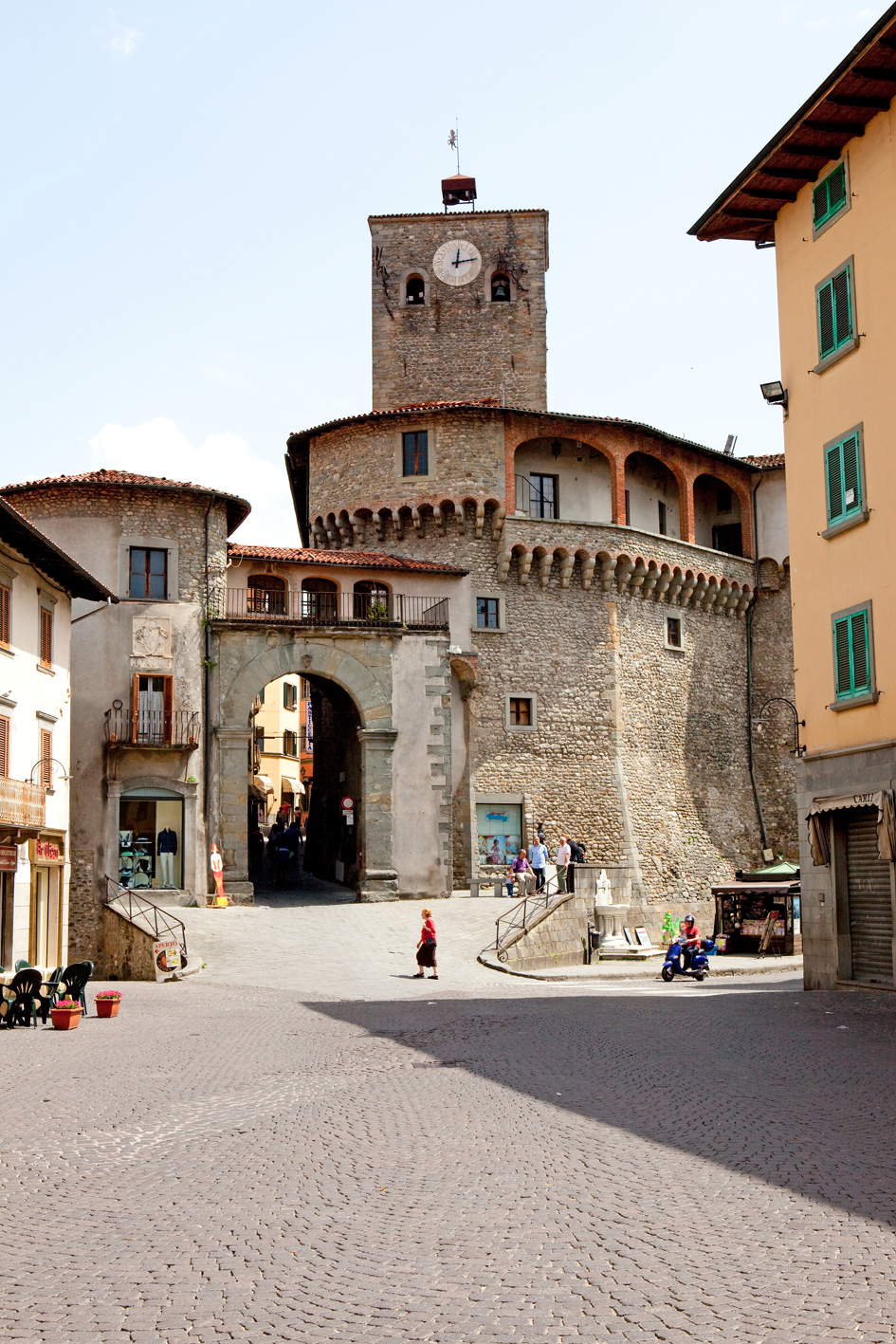
2. The Verrucole Fortress.
An ancient stronghold located in San Romano in Garfagnana, the Fortezza delle Verrucole stands as an imposing defensive structure, rising on a scenic hill, dominating the valley below and offering spectacular views of the surrounding landscape and the Apuan Alps. Built in the 12th century (although its current appearance is due to the Este family’s Renaissance-era renovations: in fact, nothing remains of the medieval construction), the Verrucole Fortress played an important strategic role in the defense of Garfagnana. Its elevated position and solid walls made it a key point of observation and control over the valley below. Over the centuries, the fortress underwent various extensions and modifications, including in conjunction with the various lords who owned it (first the Gherardinghi, then the Republic of Lucca who entrusted it to the Guidiccioni, then the Malaspina, then the Este), reflecting the evolution of military strategies and defense technologies. Purchased in 1986 by the Municipality of San Romano di Garfagnana from the last owners, the Angeloni-Bresciani family, it was entirely restored and today can be visited (it can also be reached by a special lift designed for visitors who cannot walk) and is home to an Archeopark that reconstructs life inside the fortress in the 13th century, with rooms rearranged as they must have been in ancient times and guides who re-enact the figures who once populated the fortress.
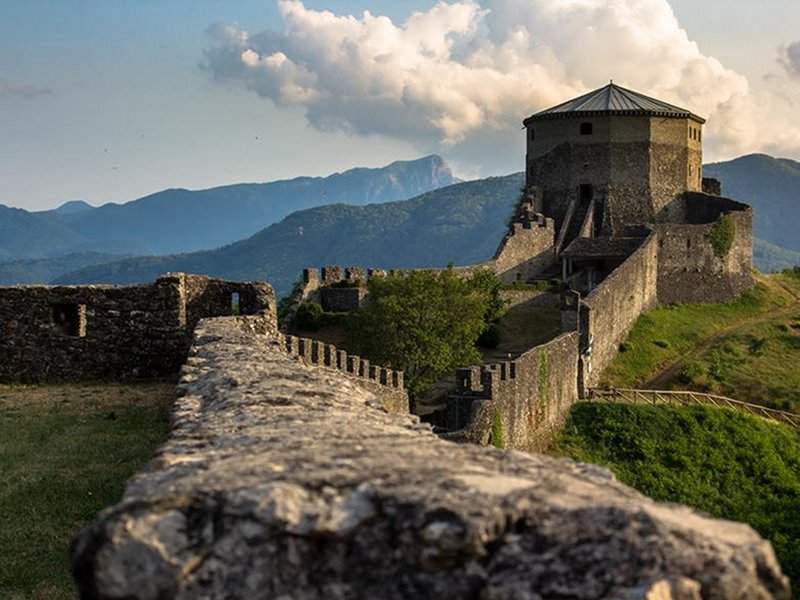
3. Orecchiella Park.
The Orecchiella Park is a protected natural area located in the northern part of Garfagnana, between the municipalities of Piazza al Serchio, San Romano in Garfagnana, Sillano Giuncugnano, Villa Collemandina, and Castiglione di Garfagnana (the preferred village to enter the park is Corfino, a hamlet of Villa Collemandina). This park, which also includes the highest peak in Tuscany (Mount Pardo, 2,054 meters above sea level) offers an ecological refuge of remarkable beauty and biological diversity, located between the Apuan Alps and the northern Apennine Alps. Its variety of habitats, flora and fauna make Orecchiella Park an outstanding destination for nature lovers and hikers. Some of the park’s best-known inhabitants include deer, roe deer, wild boar, marmots, dormice, wolves, foxes, martens, and a variety of birds, including golden eagles, buzzards, sparrowhawks, eagle owls, and kestrels. To learn all about the fauna and flora, a visit to the Visitor Center is recommended, where you can find out all about the birds of prey (the House of Birds of Prey) and mammals (Nature Museum) that inhabit the park, thanks to the presence of ad hoc trails and dioramas. Particularly rich is the flora around Pania di Corfino, the mountain most suitable for hiking: endemic species such as the Apuan vedovella and the Apuan ramno are also found there. Several species are preserved at the “Maria Ansaldi” Botanical Garden, which is located right on Pania di Corfino, 1,370 meters above sea level.
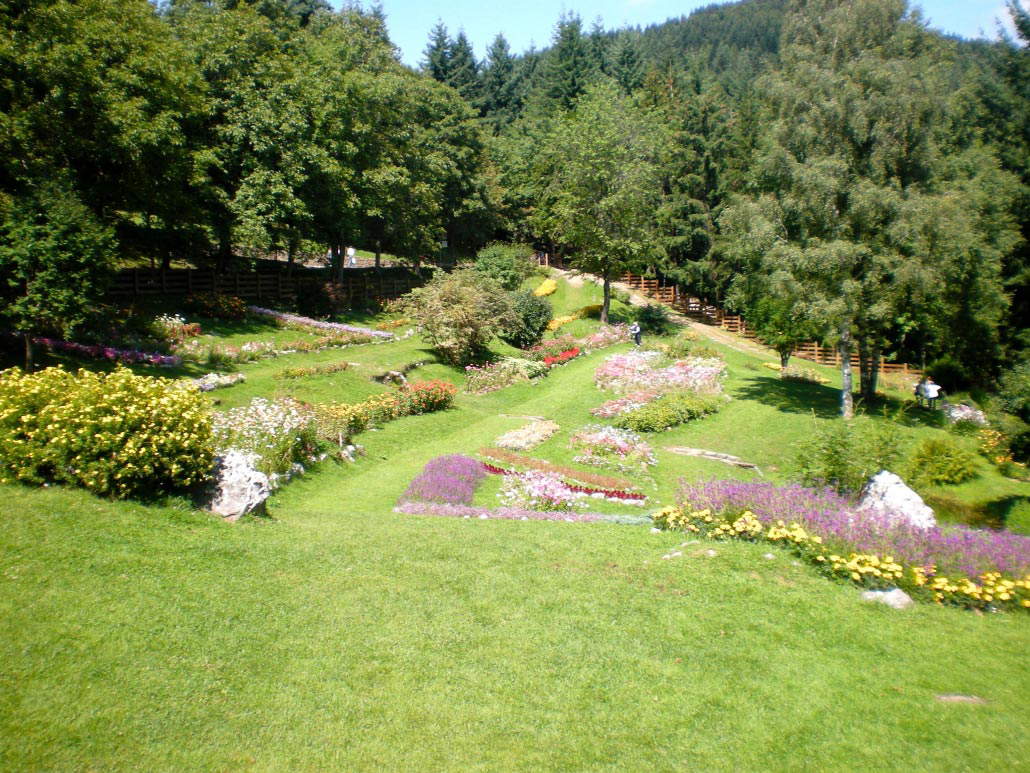
4. The Wind Cave
It proudly describes itself as one of the “most complete caves in Europe,” and indeed a visit to the Wind C ave is a must for lovers of underground excursions and geology. It is a spectacular karst cave, the result of thousands of years of erosive action of water on limestone, creating an intricate maze of passages, chambers and stalactites that form an underground world of unique beauty, located at the foot of Pania Secca, near the village of Fornovolasco. The name “Cave of the Wind” derives from the strong wind that accompanies entry into the cavern from the only practicable entrance, as well as from the fact that inside the cave one can often feel air currents caused by the different temperature inside and outside. Wind Cave, which is about 4 1/2 kilometers long with an elevation difference of about 120 meters, offers a series of guided tours that allow visitors to explore some of its most spectacular parts. Discovered in 1898 by some young people from Fornovolasco and first explored in 1929 by the Florentine Speleological Group, it is now open to tourists (one of the few to be open year-round), with three different routes (the first of which, the shortest, opened in 1967), varying in length (800, 1500 and 2200 meters) and difficulty, but all of them offer the opportunity to admire incredible stalactite and stalagmite formations, environments with evocative names (the Giants’ Chasm, the Vertical Well, the Branch of Wonders), underground lakes, unique fauna living in the cave, at an internal temperature of 10.7° C that remains constant all year round.
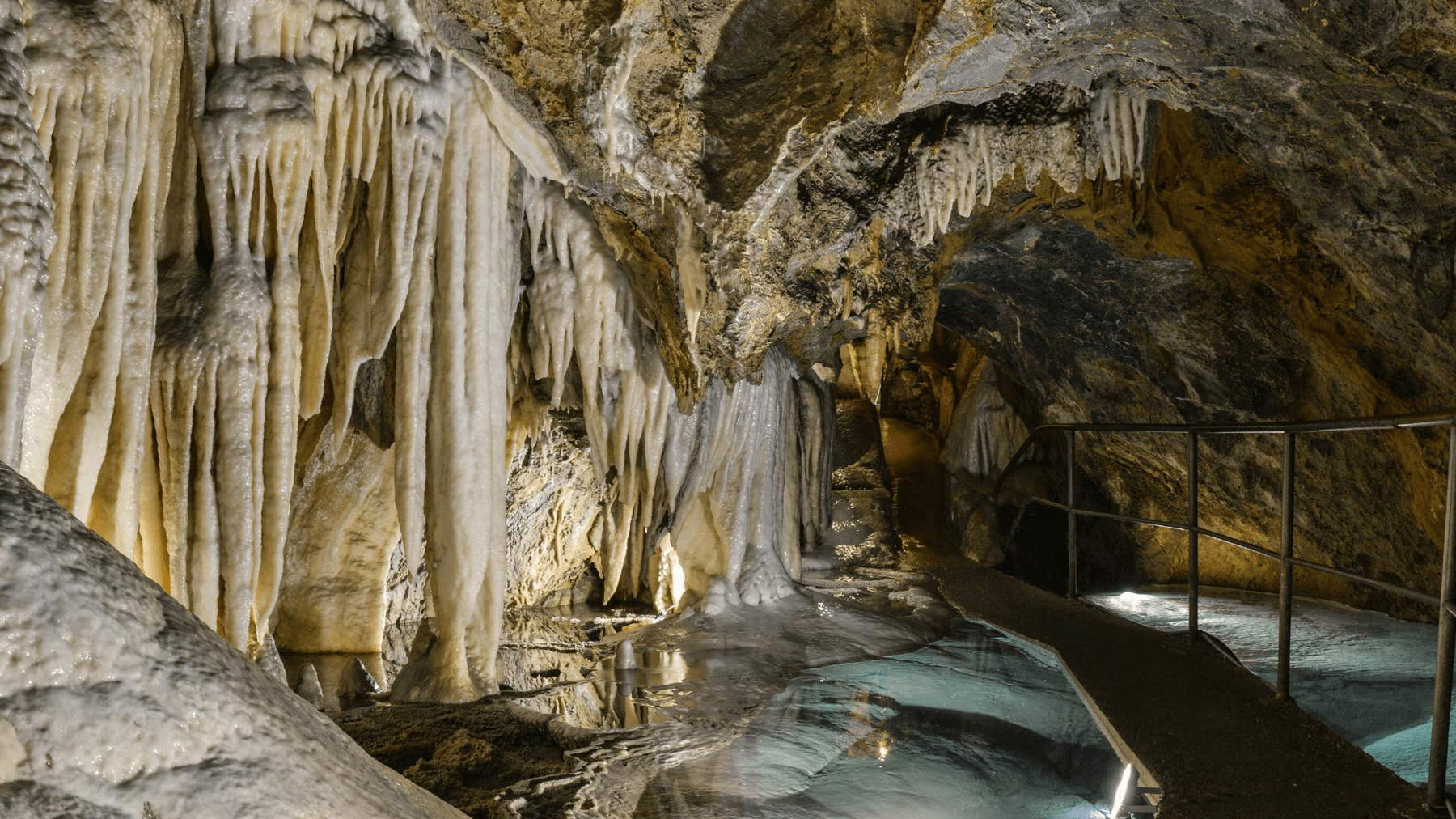
5. Lake Gramolazzo
A picturesque man-made lake located a short distance from Minucciano, Lake Gramolazzo is surrounded by majestic mountains and offers an enchanting setting where nature blends with crystal clear waters, creating an ideal place for relaxation and outdoor activities. The lake was created in the 1950s with the construction of a dam on the Serchio River, with the aim of generating hydroelectric power and providing a reservoir for water collection. This dam formed Lake Gramolazzo, which covers an area of about one square kilometer. Due to its location in a mountainous valley, the lake is surrounded by spectacular views and unspoiled nature, circumstances that have made it, especially among locals, a popular place for various recreational activities. Indeed, its calm waters are swimmable and it is possible to rent boats, paddleboats and canoes to explore the lake from a different perspective. The shores of the lake offer picnic spaces, restaurants, and areas to relax and enjoy the view. Surrounding hiking trails allow visitors to explore the lake’s surroundings and immerse themselves in the natural surroundings. The mountains and forests offer opportunities for hiking, trekking, and mountain biking, allowing visitors to discover unique views and explore the flora and fauna of the Apuan Alps.
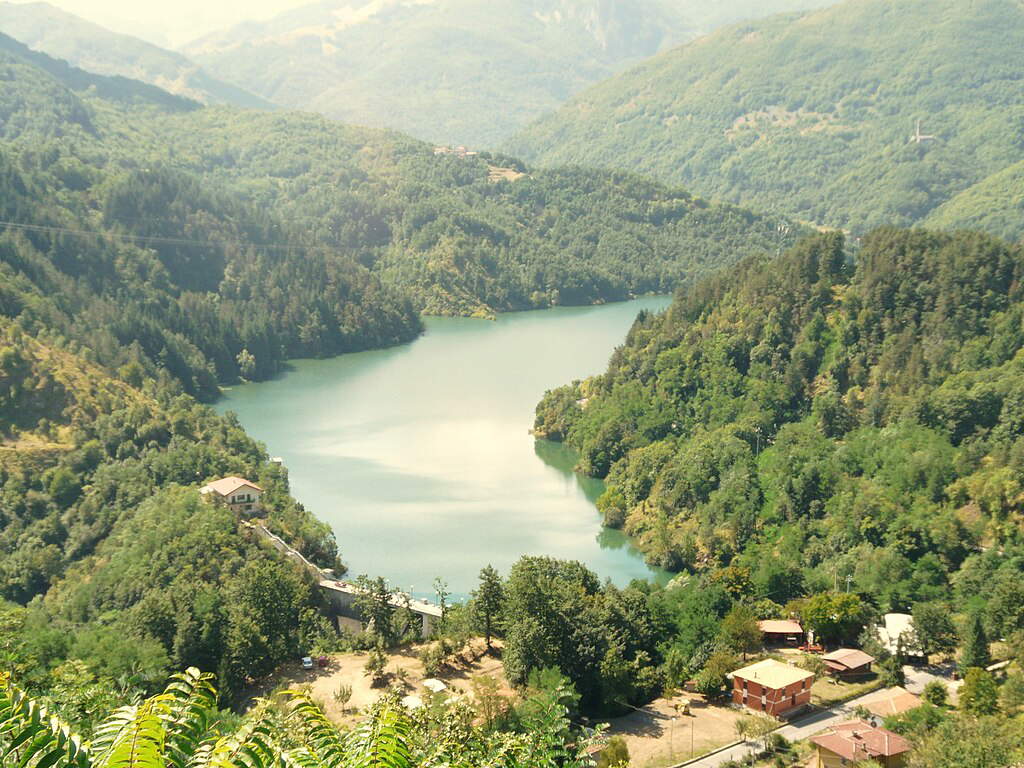
6. Holy Island
Holy Island is a unique and fascinating place located in the heart of the Apuan Alps, in the municipality of Careggine. Despite its name, Holy Island is not an island, but rather a kind of peninsula that overlooks the lake of the same name, with completely swimmable waters. A splendid medieval village surrounded by greenery, it is characterized by its stone houses with slate roofs, the church of San Jacopo, and its peaceful atmosphere. A really must-see destination for those who love quiet places.
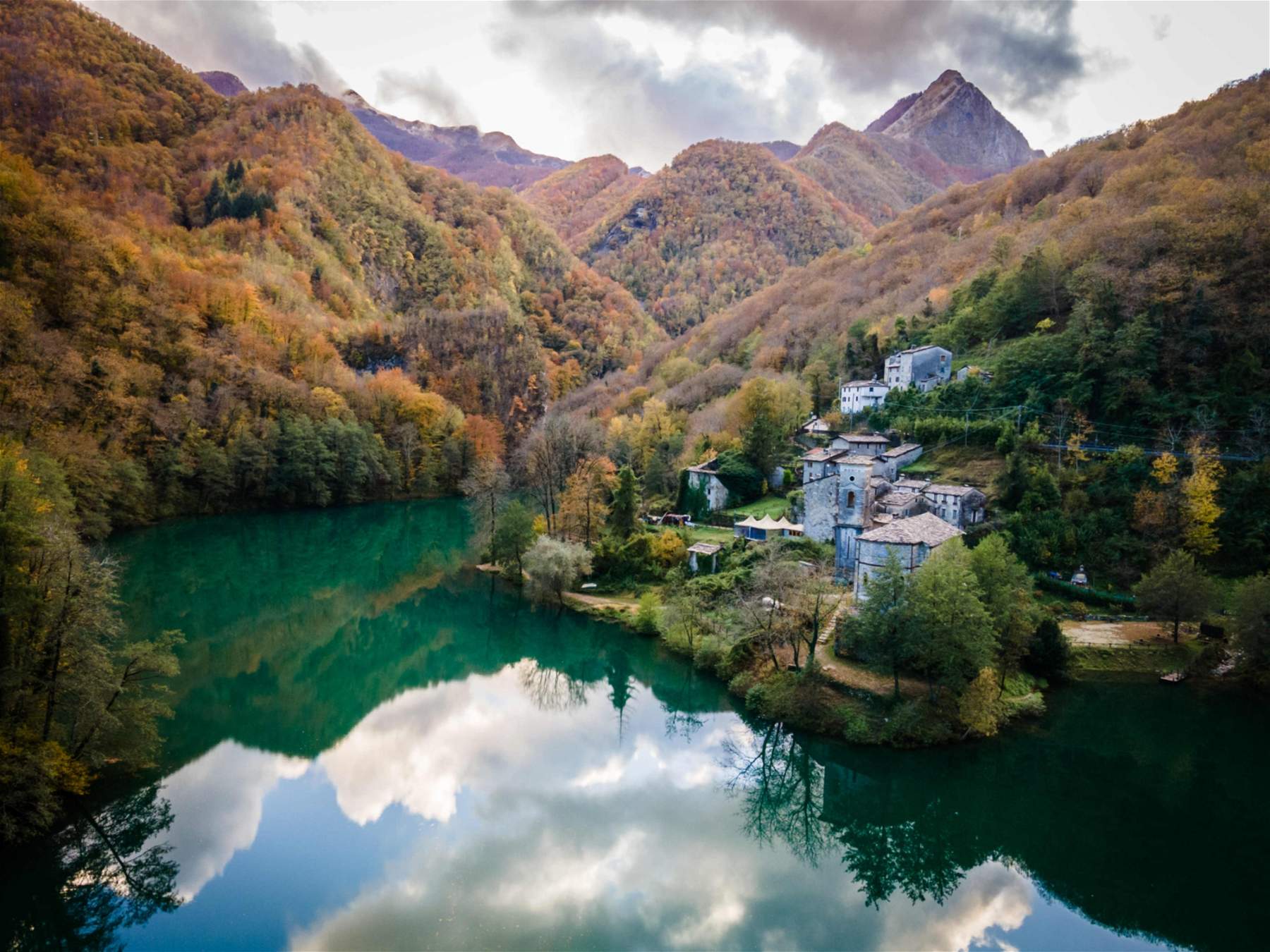
7. The gorge of Botri
It is one of the most beautiful canyons in Italy: theOrrido di Botri is a limestone gorge located on the slopes of Mount Rondinaio, carved by the Mariana and Ribellino streams, which join together to create the Rio Pelago. The main feature of Orrido di Botri is precisely the narrow, deep gorge carved into the rock by the stream. The vertical rock walls are sometimes so close together that they almost seem to touch, and the water flowing in the stream has created interesting pools, waterfalls and rock formations all along the way. To explore the Botri Gorge, you can follow a guided hiking trail (helmet and hiking shoes required) that allows visitors to immerse themselves in the heart of this natural wonder. The canyon is included in a nature reserve, the Orrido di Botri e Balzonero Nature Reserve, which was established in 1971 to enable the conservation of this site. It is also one of the nesting places of the golden eagle, which exploits the walls, as high as almost two hundred meters in some places, of this place.
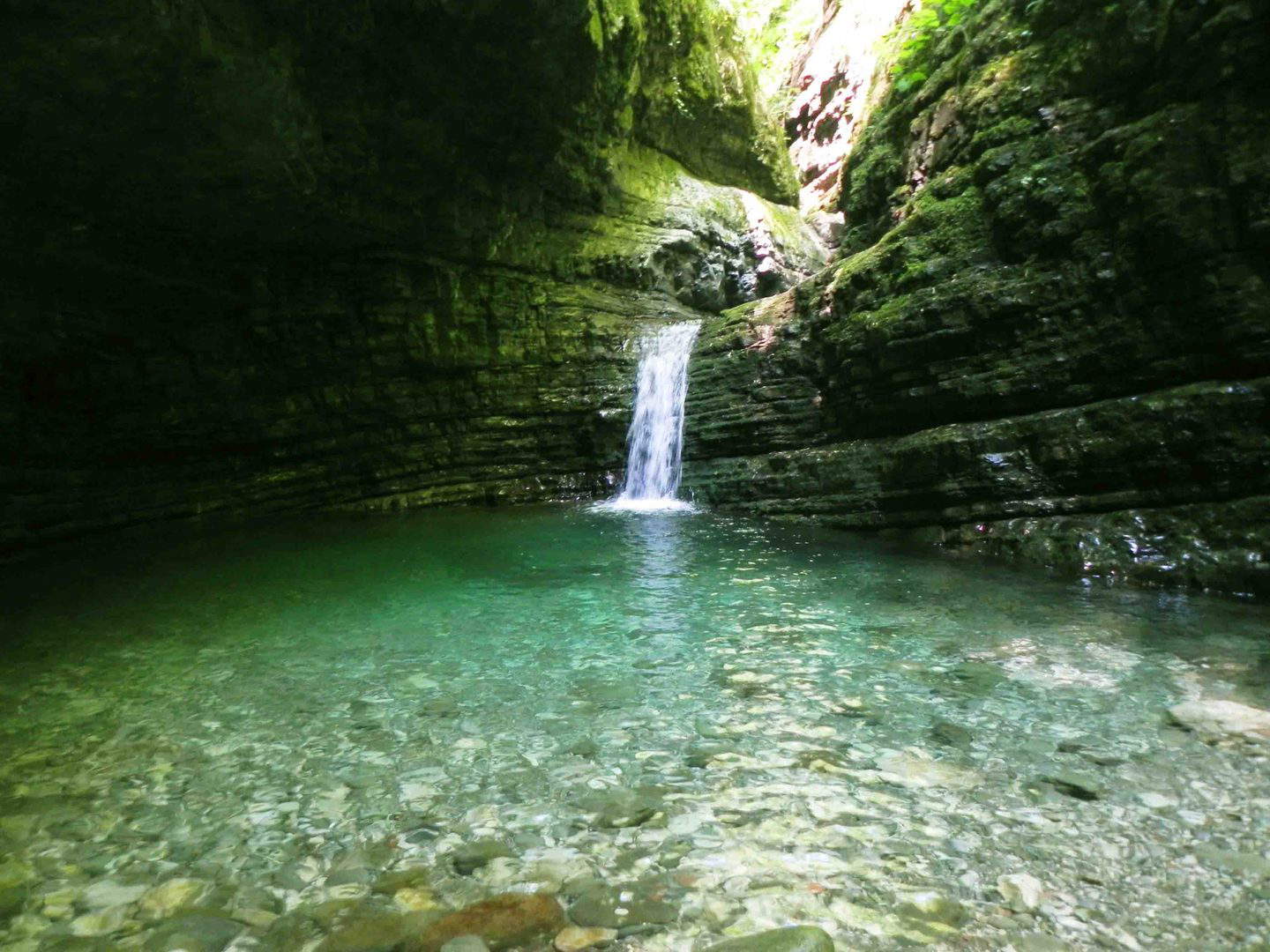
8. The Museum of the Identity of the Upper Garfagnana.
It is located in the quaint village of Gorfigliano, in the wildest part of Garfagnana, right at the foot of the Apuan Alps. The Museum of the Identity of the Upper Garfagnana, named after Olimpio Cammelli (the leader of the volunteers who participated in the renovation of the Old Church of Gorfigliano, as well as the owner of a collection of more than 1,300 objects that formed the core of the collection), was created with the aim of preserving and enhancing the history, culture and traditions of the Upper Garfagnana, a mountainous area rich in cultural heritage. The museum strives to tell the story of daily life and traditions of the local community by showcasing objects, documents, photographs and artifacts depicting past life in the region. Through permanent and temporary exhibits, the Upper Garfagnana Museum of Identity seeks to provide a comprehensive picture of the life, economic activities, and social customs that have characterized this area. Among the topics covered by the museum are traditional agriculture, animal husbandry, local crafts, religion, domestic life, and other activities and aspects that have been fundamental to the Garfagnana community over the centuries. It begins with a room where working machines are on display, and runs through rooms with historical reconstructions of Gorfigliano, rooms on marble working, and those on carpentry. Also present is a library.
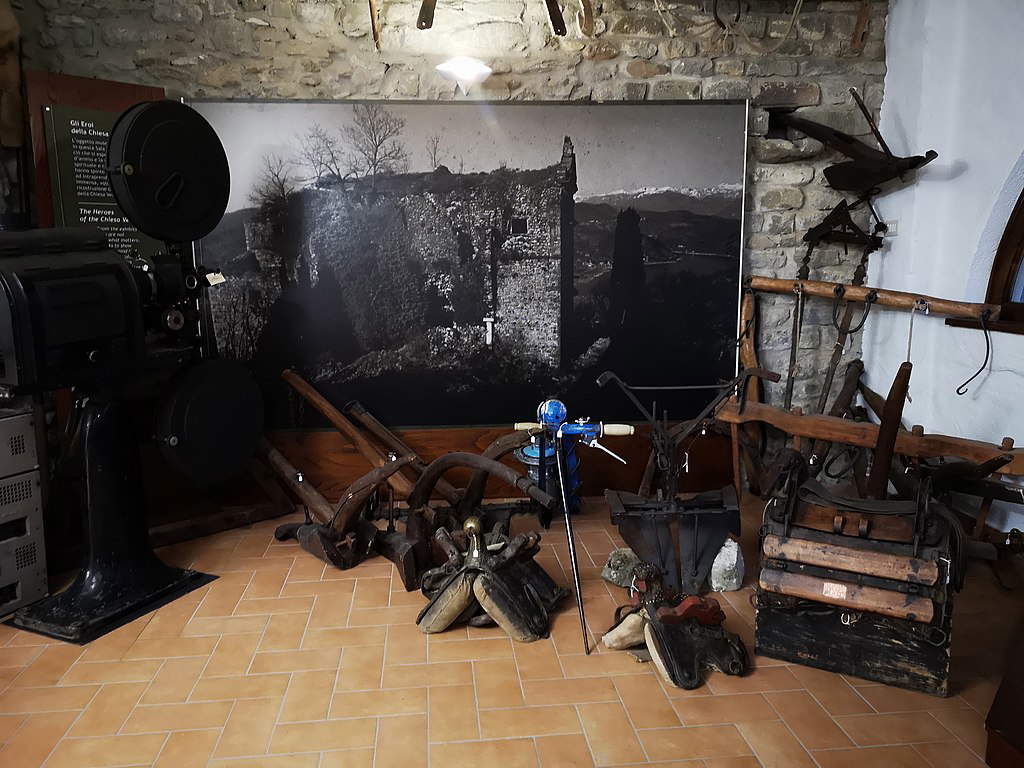
9. The Rocca di Camporgiano fortress and renaissance pottery collections.
The Rocca di Camporgiano is an ancient fortress located in the municipality of the same name in Garfagnana, Tuscany, Italy. This imposing fortress, of Renaissance origins, was built by the Este family and dominates the main communication route of the Upper Serchio Valley, along with the nearby Verrucole Fortress. Its strategic location and the majesty of its structures make it a fascinating destination for those who wish to immerse themselves in the ancient history of Garfagnana. Today the Rocca, in addition to being one of Garfagnana’s symbolic monuments, houses the Civica Raccolta di Ceramiche Rinascimentali, a remarkable collection of ceramics ranging from the 14th to the 16th century, found in the butti (i.e., the wells where garbage was thrown) during the restorations that affected the structure.
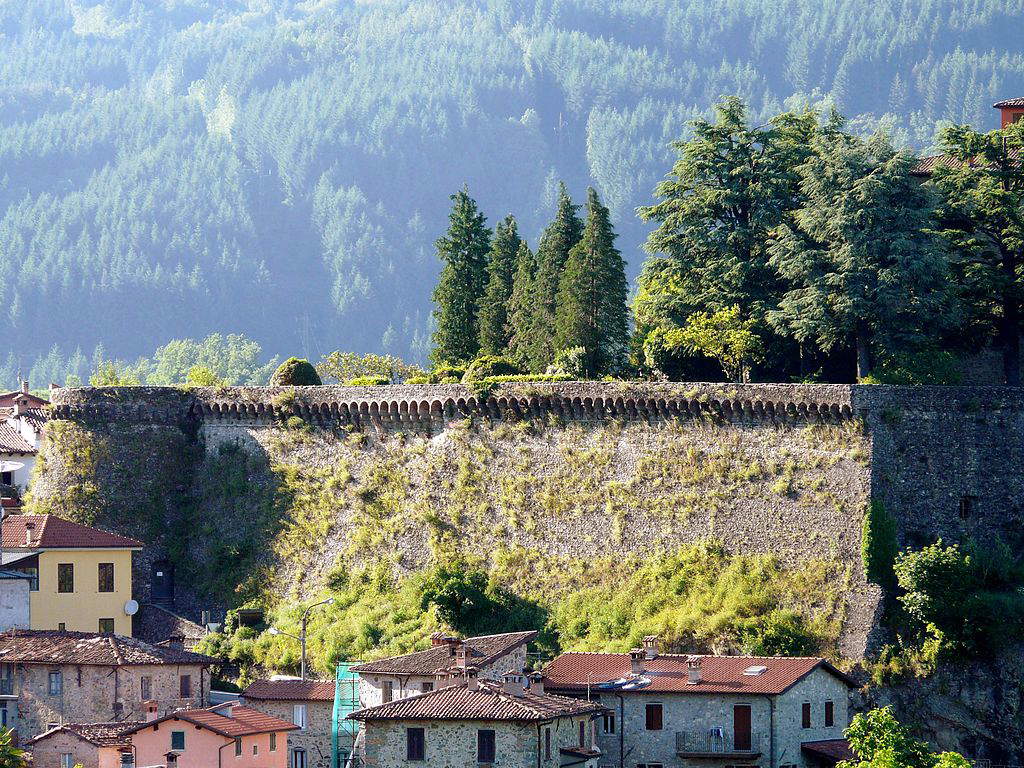
10. The hermitage of Calomini
This is one of the most interesting spiritual places in Garfagnana. The hermitage of Calomini, located a short distance from Gallicano along the road to Grotta del Vento, is a building set in the face of a deep rocky gorge above a high cliff. It dates from around the year 1000 and is easily accessible from Provincial Road 39 (there is also a large parking lot before the entrance). The construction of the hermitage developed over the following centuries (in fact, today it presents itself with its modern appearance), reflecting the spiritual importance and devotion that this area has always aroused. One of the most striking aspects of the Calomini Hermitage is its location overlooking the surrounding valley. The rock walls create an intimate and protected environment, ideal for contemplation and prayer.
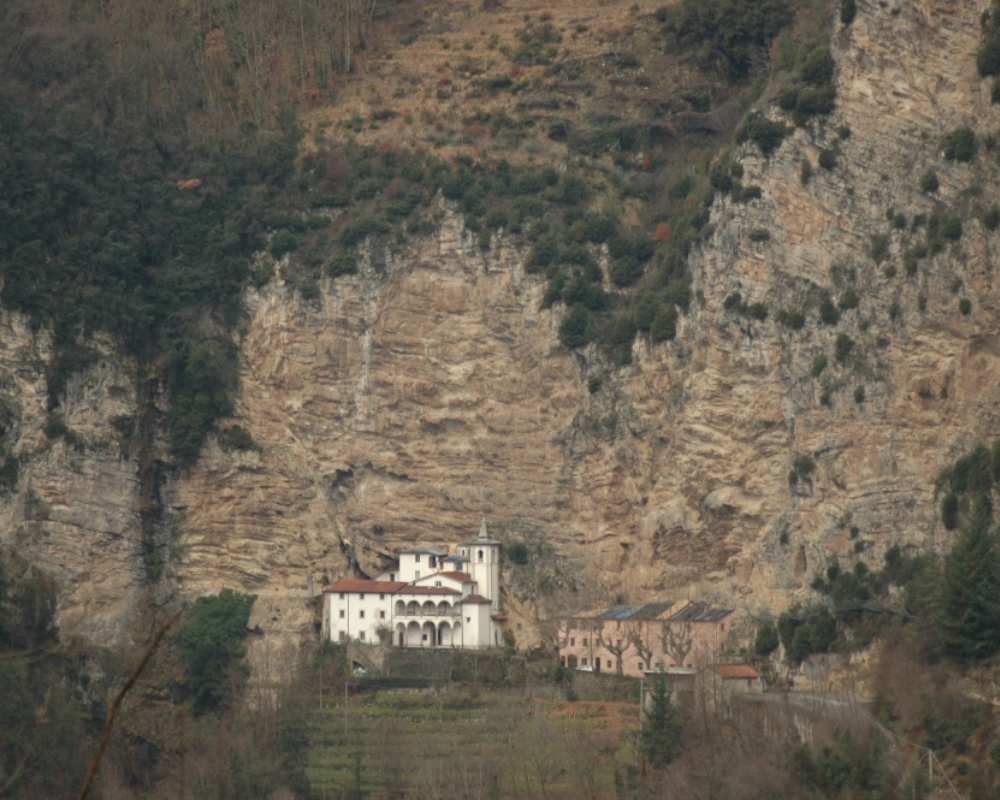
 |
| Garfagnana, what to see: the 10 places not to be missed |
Warning: the translation into English of the original Italian article was created using automatic tools. We undertake to review all articles, but we do not guarantee the total absence of inaccuracies in the translation due to the program. You can find the original by clicking on the ITA button. If you find any mistake,please contact us.





























